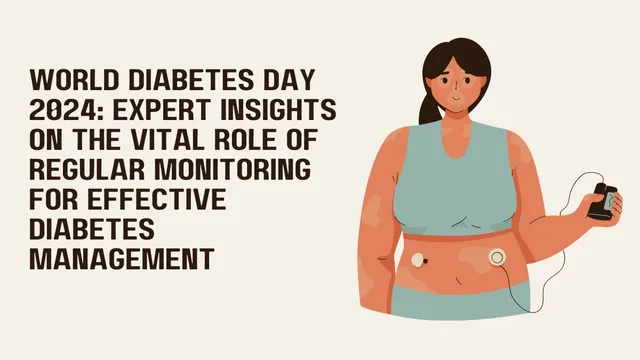- By Priyanka Munshi
- Thu, 14 Nov 2024 04:57 PM (IST)
- Source:JND
World Diabetes Day 2024: Diabetes is a group of metabolic disorders characterized by inadequate control of blood glucose levels. Hyperglycemia, also known as raised blood glucose or raised blood sugar, is a common effect of uncontrolled diabetes and, over time, leads to serious complications. The main types of diabetes are Type 1, Type 2, and Gestational diabetes. Type 2 diabetes, the most common form, typically occurs in adults and happens when the body becomes resistant to insulin or doesn’t produce enough insulin. Type 1 diabetes, also known as juvenile diabetes or insulin-dependent diabetes, is a chronic condition where the pancreas produces little or no insulin.
Gestational diabetes causes high blood sugar levels during pregnancy in women who did not have diabetes before. Women with gestational diabetes are at an increased risk of complications during pregnancy and delivery. Statistics indicate that more than 1.31 billion people could be living with diabetes worldwide by 2050. This means that millions of people will be affected by a disease that causes life-altering morbidity, high rates of mortality, and interacts with or exacerbates other conditions. With the numbers rising exponentially, diabetes is rightly being called the defining disease of the century. In a conversation with Jagran English, Dr. Renji Jacob, Head of Lab Operations and MD Pathology at Metropolis Healthcare Limited in Kerala, discussed the role of regular monitoring in managing diabetes effectively.
Most of the burden of diabetes is attributable to risk factors such as obesity, dietary habits, environmental and occupational risks, tobacco use, alcohol consumption, and low physical activity. Symptoms of diabetes include excessive thirst, frequent urination, blurred vision, fatigue, and unexplained weight loss. Over time, diabetes can damage blood vessels in the heart, eyes, kidneys, and nerves, leading to an increased risk of health problems such as heart attacks, strokes, kidney failure, and permanent vision loss.
There Are Several Ways To Diagnose Diabetes, Including:
The A1C Test: This test measures your average blood glucose over the past three months. It does not require fasting or drinking anything. Diabetes is diagnosed if the A1C is greater than or equal to 6.5%.
Fasting Plasma Glucose Test: This test checks your blood glucose levels after fasting for at least 8 hours. It is typically done first thing in the morning, before breakfast. A fasting plasma glucose level greater than or equal to 126 mg/dl is considered diagnostic for diabetes.
Random Blood Sugar Test: This test can be done at any time of the day, without the need for fasting. Diabetes is diagnosed if random blood sugar levels are greater than or equal to 200 mg/dl.
Oral Glucose Tolerance Test (OGTT): This 2-3 hour test checks blood glucose levels before and after drinking a sweet drink. It helps determine how the body processes sugar.
Also Read: Rising Cases Of Diabetes Among The Youth: Understand The Reasons From An Expert
Recently, the advent of Point of Care Testing (POCT) devices has made it easier for patients to monitor their blood sugar levels at home. A real-time Continuous Glucose Monitor (CGM) is a newer technology that continuously monitors blood sugar levels throughout the day using a sensor inserted under the skin.
Prediabetes or impaired glucose tolerance is a condition where blood glucose levels are higher than normal but not high enough to be diagnosed as diabetes. People with prediabetes are at a higher risk of developing Type 2 diabetes. Since there are no clear symptoms of prediabetes, annual testing is recommended for those at risk. Prediabetes is diagnosed with the following results:
- A1C of 5.7–6.4%
- Fasting blood glucose of 100–125 mg/dl
- OGTT two-hour blood glucose of 140–199 mg/dl
Dr. Renji Jacob emphasized that diabetes treatment depends on the type of diabetes and may include lifestyle changes, medications, or both. Early and effective diagnostic methods are crucial in curbing the rise of diabetes and improving both life expectancy and quality of life.

